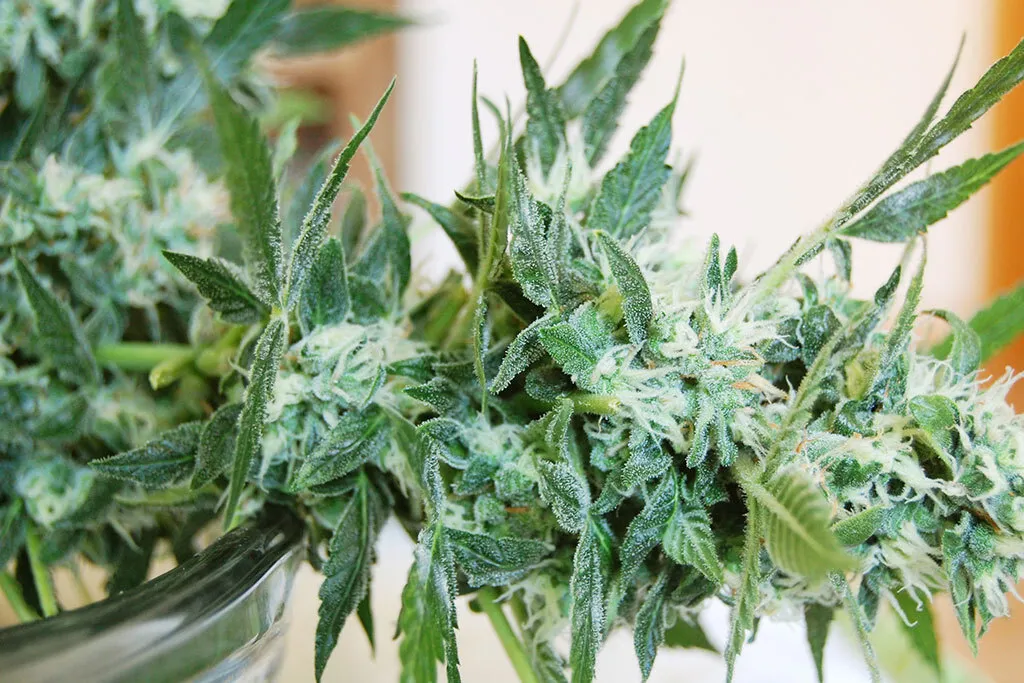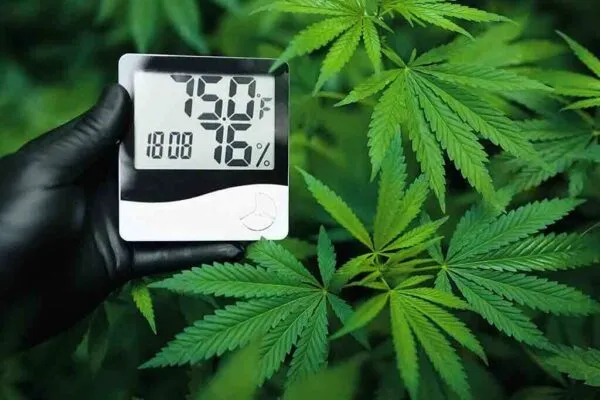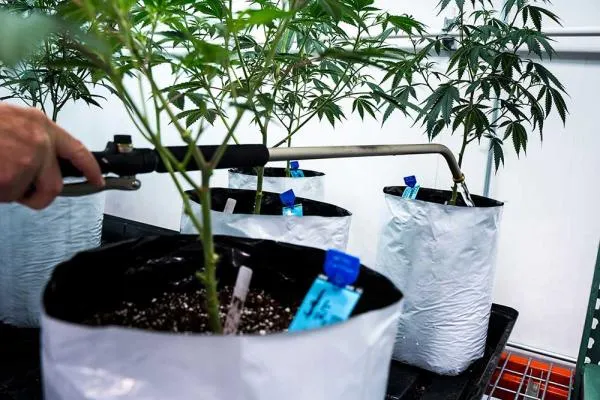Table of contents
One of the perks of indoor growing is cultivators can fine-tune and control their environments. This includes monitoring temperatures, and humidity control too. By dialing in a grow room’s environment, growers can improve plant health and maximize yields, overall.
Of course, the concept of humidity control is no simple feat to conquer. Especially considering the number of external factors that lend to increased moisture in the air. So, what are some of the best practices for indoor growing humidity control?
Keep reading for everything you need to know on humidity control, including the top tips on how to lower humidity in grow tents.
Why Humidity Control Matters to Plant Growth
First thing’s first, let’s uncover why humidity control matters to the overall growth of your plants. By definition, humidity measures the level of water vapors in the air. To plants, humidity is crucial to evaporation and transpiration. Evaporation and transpiration are two important parts of photosynthesis. That being, the process in which plants convert light energy into chemical energy to grow.
For instance, if humidity levels are low - plants will absorb more nutrients and water. If humidity levels are high, plants can go ‘on guard’ and close their stomata for protection. This will ultimately halt growth, and stunt growth overall since your plant won’t be absorbing food and water optimally.
In addition to reduced and slowed growth, other issues can arise from high or low humidity levels like -

White powdery mildew
White powdery mildew, commonly known as PM is a fungal disease that can sprout from high humidity levels. It begins as small patches of what looks like white powder, and spreads rapidly. So, be sure to check your plants carefully, closely, and frequently if your humidity levels are higher than normal. To avoid powdery mildew, ensure your room has proper airflow and ventilation.

Bud mold or bud rot
Bud mold or rot is most common in late flowering stages and often occurs inside the bud before it appears on the outside. As your plants' bloom, ensure your room has proper airflow and check the interior of buds for golden brown coloring, which is the first sign of bud rot or mold.

Nutrient deficiencies
The most common signs of nutrient deficiencies in cannabis plants, are yellowing, curling, leaves, or leaves with burnt tips.
That means humidity control is imperative to healthy cannabis plant growth. If you’ve ever grown indoors before, you know just how many factors go into controlling its environment. In fact, factors like temperature, airflow, light types, and even the number of plants can affect the area. So, just how does temperature affect humidity control? We’ll explore that next.
How Temperature & Humidity Connect
Let’s get back to science class, with a brief breakdown of how temperature and humidity connect. Since the relationship will affect how effectively you control humidity levels in your indoor grow space. Relative humidity refers to the measure of water that’s being ‘held’ in the air. In comparison to the maximum amount of water that the air temperature can hold.
Confused? Perhaps an example will help.

Temperatures around 32℉ hold around 5 ml of water, while 68℉ can hold up to 7.2 ml of water. Hence, why the winter air is drier versus warmer seasons. This idea is often referred to as ‘relative humidity’, which is now being monitored by commercial and home growers alike through Vapour Pressure Deficit, AKA VPD.
That’s because cannabis plants will flourish at varying relative humidities, which ultimately depends on the temperature of the air. To measure both, VPD chart weed measurements are widely available (see below). These charts can give you an idea of how optimally your plant is absorbing and uptaking nutrients and water at varied stages of life.
A benefit of measuring your environment’s VPD is to avoid issues that can arise from too much moisture in the air. Like dew forming on leaves, which can quickly and easily turn into molds. To keep a close eye on humidity levels and temperatures, equip your space with a hygrometer and thermometer that accurately measure both.
You can see from the VPD chart weed ranges will vary for each stage of growth. Next, we’ll dive deep into optimal humidity levels for each stage of growth so you can adjust accordingly.
Humidity Levels for Each Stage of Growth

Naturally, cannabis plants require varying levels of humidity at different stages of growth. This means you’ll be responsible for adjusting your environment as your plants grow from seed to harvest.
Below is a cannabis humidity chart you can reference that reflects optimal levels for each stage.
| Stage of Growth | Optimal Humidity Levels | |
|---|---|---|
| Seedling | Around 70% | Seedlings and clones should be kept in an area with high humidity levels - around 70%. Hence, the use of clone ‘domes’ and wet paper towels to promote moisture during this young stage of plant growth. |
| Vegetation | 40-60% | In Veg, you’ll want to decrease humidity levels just slightly. That’s because higher levels of humidity can help your plant thrive, without a healthy strong root system in place. Plant leaves, which develop vigorously during veg have the ability to pull water vapor from the air, therefore growing faster with increased levels of air moisture. An optimal range will be anywhere from 40-60%. |
| Flowering | 40-50% | In Flower, another slight decrease will benefit the health of your plants. Since the plant now has a strong root system, it’ll be able to absorb water and nutrients optimally there. In flower, leaves can still absorb water so dropping humidity levels help to avoid molds and mildew that can sprout from too much moisture. The optimal range for ideal humidity control is 40-50% |
| Late Flowering | 40-45% | To avoid bud rot forming in the late stages of growth, it’s recommended to lower humidity levels to 40-45%. It’s also believed that dropping humidity levels in late flowering, may increase resin production. |
Keep in mind, it’s just as important to consider the exact strain you’re cultivating when it comes to humidity control. Because different strains originated from differing climates, some will benefit from higher levels of humidity versus lower.
To be sure, always acquire your genetics from a trusted and reputable seed bank. As seed breeders should indicate the strain’s preferred climate in its descriptions.
Now that you better understand just why humidity control is important, it’s time to discover just how to control it. Last but not least, is our tips and tricks on how to lower humidity in grow tents, and rooms, and increase it when needed, too.
Top Tips for Controlling Humidity

So now you know just how important humidity is and how it affects your marijuana plants. But how exactly are you supposed to control it? It’s easier than you think.
Start by making a small investment in a thermometer that will also give you the humidity of the room. After all, you can’t fix a problem if you don’t know that it exists. These are little wall units that will tell you the exact environment your plants are in. So you’ll know whether to increase or decrease the humidity levels. To increase, decrease or maintain humidity in general - here are the top tips for humidity control for indoor grow rooms.
Add a Humidifier/Dehumidifier
Up first is the most obvious solution to humidity control. By adding a humidifier and dehumidifier, you can adjust both pieces of equipment to effectively maintain an optimal level of humidity. Most dehumidifier models are now equipped with digital tools and internal hygrometers to maintain the exact level of humidity set. Adding an AC unit can also help decrease levels of humidity.
If you don’t have the funds to invest in a humidifier, there are some DIY options you can implement. Like hanging wet towels or cloths in your grow area. Or, using open water containers. With these methods, you’ll want to be sure to replace the towels or containers frequently, to avoid the growth of mold.
Improve Ventilation
If your grow space is too hot and humid, improving the room’s ventilation is a simple fix. You can do so by increasing the settings on your current exhaust system. Or, you may need to install a more powerful exhaust fan depending on the exact environment.
Keep Soil Surfaces, Moist
When trying to increase humidity, keeping the surfaces of your soil moist is another simple solution. On the flip side, if you’re trying to decrease humidity, avoid overwatering or saturated soil.
Improve Drainage
As we mentioned, standing water can add to humidity levels. So if you’re looking to decrease humidity, improving drainage will help. First, reduce the areas in your grow room or space that collect water. While being sure to remove any water collectors promptly to avoid increased levels of humidity.
Seal and Insulate
Ensuring that your grow room or tent is properly sealed and insulated, will help humidity control altogether. Rooms can be affected by the outside climates, when not properly sealed. So, to dial-in an optimal environment, proper insulation from the exterior’s cold or hot temps will help.
Defoliate
Plants that are extra leafy can add to indoor humidity levels. That means defoliating can help decrease the level of humidity. This step can be crucial to avoid molds or mildews, especially in rooms without proper airflow or ventilation.
Humidity Control for Optimal Growth
From this in-depth guide, now you’re more aware of just how crucial humidity control is for the health of cannabis plants. With a few simple supplies, and a cannabis humidity chart handy - you can easily help maximize growth and yields overall.
Stay tuned for more tips and tricks to optimize your home grow for professional results. Or, begin shopping MSNL’s exclusive collection of clean, trusted genetics. That comes equipped with climate and humidity preferences.
Become a part of the MSNL family of growers, today!









